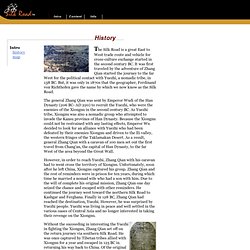

National Geographic channel lost in china silk road. Atlas: China Revealed: Silk Road. Silk road national geographic. The Silk Road. On the eastern and western sides of the continent, the civilisations of China and the West developed.

The western end of the trade route appears to have developed earlier than the eastern end, principally because of the development of the the empires in the west, and the easier terrain of Persia and Syria. The Iranian empire of Persia was in control of a large area of the Middle East, extending as far as the Indian Kingdoms to the east. Trade between these two neighbours was already starting to influence the cultures of these regions. This region was taken over by Alexander the Great of Macedon, who finally conquered the Iranian empire, and colonised the area in about 330 B.C., superimposing the culture of the Greeks. Silk Road: Map, Trade, History of Silk Road. Great Silk Road During the 6-14th century, there were thousands of large and small routes that crossed Asian Continent leading to the West.

Caravans followed these routes and each was filled with exotic clothes, eastern goods and spices. Silk Road - Introduction. The Silk Road is a great East to West trade route and vehicle for cross-culture exchange started in the second century BC.

It was first traveled by the adventure of Zhang Qian started the journey to the far West for the political contact with Yuezhi, a nomadic tribe, in 138 BC. But, it was only in 1870s that the geographer, Ferdinand von Richthofen gave the name by which we now know as the Silk Road. The general Zhang Qian was sent by Emperor Wudi of the Han Dynasty (206 BC- AD 220) to recruit the Yuezhi, who were the enemies of the Xiongnu in the second century BC. As Yuezhi tribe, Xiongnu was also a nomadic group who attempted to invade the Kansu province of Han Dynasty.